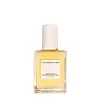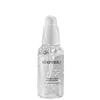What's inside
What's inside
 Key Ingredients
Key Ingredients

 Benefits
Benefits

 Ingredients Side-by-side
Ingredients Side-by-side

Water
Skin ConditioningSqualane
EmollientGlycerin
HumectantGalactomyces Ferment Filtrate
HumectantCentella Asiatica Leaf Extract
Skin ConditioningCynanchum Atratum Extract
Skin ConditioningVitis Vinifera Seed Oil
EmollientSodium Acrylates/Beheneth-25 Methacrylate Crosspolymer
Skin ConditioningAllantoin
Skin ConditioningPrunus Avium Seed Oil
EmollientPhenoxyethanol
PreservativeHydrogenated Polydecene
EmollientHydroxydecyl Ubiquinone
AntioxidantSodium Polyacrylate Starch
AbsorbentLauryl Glucoside
CleansingEthylhexylglycerin
Skin ConditioningSodium Hyaluronate
HumectantHydrolyzed Royal Jelly Protein
Skin ConditioningCeramide EOP
Skin ConditioningCeramide Ns
Skin ConditioningCeramide NP
Skin ConditioningCeramide As
Skin ConditioningCeramide AP
Skin ConditioningBeta-Glucan
Skin ConditioningHydrogenated Lecithin
EmulsifyingCholesterol
EmollientGlyceryl Stearate
Emollient2,3-Butanediol
HumectantWater, Squalane, Glycerin, Galactomyces Ferment Filtrate, Centella Asiatica Leaf Extract, Cynanchum Atratum Extract, Vitis Vinifera Seed Oil, Sodium Acrylates/Beheneth-25 Methacrylate Crosspolymer, Allantoin, Prunus Avium Seed Oil, Phenoxyethanol, Hydrogenated Polydecene, Hydroxydecyl Ubiquinone, Sodium Polyacrylate Starch, Lauryl Glucoside, Ethylhexylglycerin, Sodium Hyaluronate, Hydrolyzed Royal Jelly Protein, Ceramide EOP, Ceramide Ns, Ceramide NP, Ceramide As, Ceramide AP, Beta-Glucan, Hydrogenated Lecithin, Cholesterol, Glyceryl Stearate, 2,3-Butanediol
 Reviews
Reviews

Ingredients Explained
These ingredients are found in both products.
Ingredients higher up in an ingredient list are typically present in a larger amount.
Ceramide AP is formally known as Ceramide 6.
Ceramides are intercellular lipids naturally found in our skin that bonds dead skin cells together to create a barrier. Having a strong skin barrier leads to more firm and hydrated skin.
They are known for their ability to hold water and thus are a great ingredient for dry skin. By bolstering the skin ceramides act as a barrier against irritating ingredients. This can help with inflammation as well.
If you would like to eat ceramides, sweet potatoes contain a small amount.
Read more about other common types of ceramides here:
Ceramide NP
Ceramide EOP
Glycerin is already naturally found in your skin. It helps moisturize and protect your skin.
A study from 2016 found glycerin to be more effective as a humectant than AHAs and hyaluronic acid.
As a humectant, it helps the skin stay hydrated by pulling moisture to your skin. The low molecular weight of glycerin allows it to pull moisture into the deeper layers of your skin.
Hydrated skin improves your skin barrier; Your skin barrier helps protect against irritants and bacteria.
Glycerin has also been found to have antimicrobial and antiviral properties. Due to these properties, glycerin is often used in wound and burn treatments.
In cosmetics, glycerin is usually derived from plants such as soybean or palm. However, it can also be sourced from animals, such as tallow or animal fat.
This ingredient is organic, colorless, odorless, and non-toxic.
Glycerin is the name for this ingredient in American English. British English uses Glycerol/Glycerine.
Learn more about GlycerinPhenoxyethanol is a preservative that has germicide, antimicrobial, and aromatic properties. Studies show that phenoxyethanol can prevent microbial growth. By itself, it has a scent that is similar to that of a rose.
It's often used in formulations along with Caprylyl Glycol to preserve the shelf life of products.
Water. It's the most common cosmetic ingredient of all. You'll usually see it at the top of ingredient lists, meaning that it makes up the largest part of the product.
So why is it so popular? Water most often acts as a solvent - this means that it helps dissolve other ingredients into the formulation.
You'll also recognize water as that liquid we all need to stay alive. If you see this, drink a glass of water. Stay hydrated!
Learn more about Water